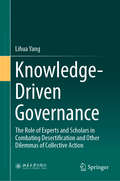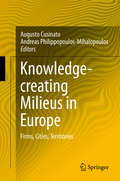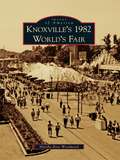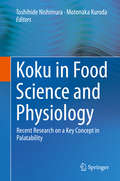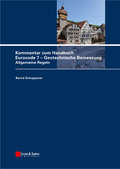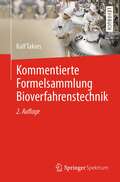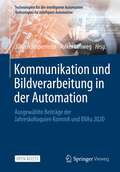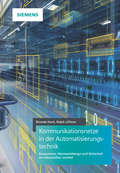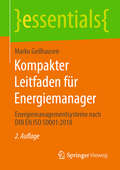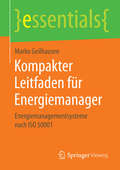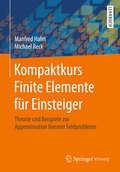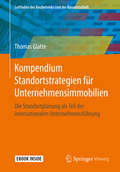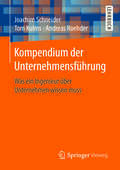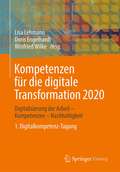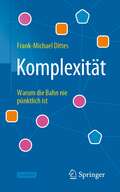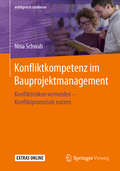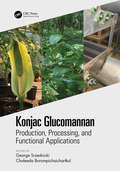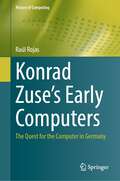- Table View
- List View
Knowledge-Driven Governance: The Role of Experts and Scholars in Combating Desertification and Other Dilemmas of Collective Action
by Lihua YangThis book explores a new model for addressing the central issue of environmental and other collective actions. An alternative to the classical models: central authority, privatization, and self-governance, it has provisionally been named “expert and scholar-based-” or “knowledge-driven governance”. The book also identifies seven working rules (or design principles) for successful knowledge-driven governance, and argues that the more strictly these rules are abided by, the more successful this model of governance becomes. Lastly, it demonstrates that in addition to Lindblom’s observed intellectually guided society and preference-guided/volition-guided society, there may be the possibility of a knowledge-driven society in which knowledge or intellect plays a greater role. The results obtained are supplemented by numerical calculations, presented as tables and figures. This book is intended for graduate students, lecturers and researchers working in environmental management, environmental science and engineering, sustainable development, collective action, and public administration.
Knowledge-creating Milieus in Europe
by Augusto Cusinato Andreas Philippopoulos-MihalopoulosThis book introduces a radically spatialised approach to knowledge creation and innovation. Reflecting on an array of European urban and regional developments, it offers an updated notion of milieu as the conceptual and material space of knowledge and innovation in line with the interpretative turn in social sciences and humanities. In view of the unwillingness of mainstream economics to accommodate such a trend, the authors pursue a broadly understood hermeneutic approach that expands on the triad of knowledge-space-innovation. The book's main findings are that space is an essential intermediary in the connection between knowledge and innovation, and that a renewed notion of milieu provides the knowledge-space-innovation triad with both an analytical basis and operational power. It also offers fresh insights into the significance and potential of the knowledge economy. A number of empirical European case studies on various scales (organisations, cities and territories) support the findings and suggest new policy directions.
Knoxville's 1982 World's Fair
by Martha Rose WoodwardFrom May 1 through October 31, 1982, Knoxville hosted the world's fair based on the theme "Energy Turns the World." Expo '82 was the first world's fair to be held in the southeastern United States in 97 years, hosting 22 countries and more than 11 million people. Once referred to as the "scruffy little city by the Tennessee River," Knoxville provided one big party for people to visit from all over to witness the live entertainment, parades, displays, exhibits, musical and sporting events, food, costumes, rides, games, and arcades. The news reports of the day declared the "World Came to Knoxville" as it hosted the official international exposition, fully licensed and sanctioned by the Bureau des Expositions Internationales in Paris, France.
Knuckleboom Loaders Load Logs: A Trip to the Sawmill
by Steven Borns Joyce Slayton-MitchellIn Knuckleboom Loaders Load Logs, Joyce Slayton Mitchell takes readers on a trip from the woods to the sawmill. Huge saws, hi-tech feller bunchers, rugged knuckleboom loaders, and speedy slasher saws are just some of the fascinating machines that are used to turn trees into lumber, sawdust, wood chips, and many other useful materials. The superb full-color photographs by veteran photographer Steven Borns, and the author's straightforward descriptions, make it easy for armchair visitors to follow along as trees are felled and delimbed in the forest and then trucked to the sawmill where they are scaled, sorted, debarked, and sawn. Children will delight in scanning the crystal-clear pictures to imagine themselves operating each machine and figuring out which is doing what. A glossary of timber talk, a page of forest facts, and a list of forestry websites for children and teachers help readers young and old learn the lingo and understand more about trees -- our most important renewable natural resource.
Knuckleboom Loaders Load Logs: A Trip to the Sawmill
by Steven Borns Joyce Slayton-MitchellIn Knuckleboom Loaders Load Logs, Joyce Slayton Mitchell takes readers on a trip from the woods to the sawmill. Huge saws, hi-tech feller bunchers, rugged knuckleboom loaders, and speedy slasher saws are just some of the fascinating machines that are used to turn trees into lumber, sawdust, wood chips, and many other useful materials. The superb full-color photographs by veteran photographer Steven Borns, and the author's straightforward descriptions, make it easy for armchair visitors to follow along as trees are felled and delimbed in the forest and then trucked to the sawmill where they are scaled, sorted, debarked, and sawn. Children will delight in scanning the crystal-clear pictures to imagine themselves operating each machine and figuring out which is doing what. A glossary of timber talk, a page of forest facts, and a list of forestry websites for children and teachers help readers young and old learn the lingo and understand more about trees -- our most important renewable natural resource.
Kodak's Ergonomic Design for People at Work
by The Eastman Kodak CompanyWritten for those who are on the job but not necessarily professionally trained ergonomists, the principles and approaches detailed in this highly regarded guide have all been implemented in real-world workplace environments and proven successful in reducing the potential for occupational injury, increasing the number of people who can perform a job, and improving employee performance on the job.
Koku in Food Science and Physiology: Recent Research on a Key Concept in Palatability
by Toshihide Nishimura Motonaka KurodaThis is the first book to explore the science underlying the concept of “koku”, which is central to an understanding of the palatability of food within Japanese cuisine and is attracting increasing interest among food scientists and professionals worldwide. Koku may be defined as the sensation that results from the complexity of the food (i.e., its richness or body), its lingering aftertaste or persistence, and its heartiness in terms of taste, aroma, and texture. A variety of substances have been found to impact significantly on koku, including umami substances, phytosterols, certain aromatic compounds, and kokumi substances. In Koku – Food Science and Physiology, readers will find full explanation of the conceptual aspects and the latest research results on a wide range of topics, including the relevant flavor chemistry and sensory analysis. Written by leading scientists in the field, the book will be a valuable resource for students and researchers in the fields of food chemistry, nutritional science, taste physiology, and neuroscience, as well as for professionals in the food industry.
Kokumi Substance as an Enhancer of Koku: Biochemistry, Physiology, and Food Science
by Motonaka KurodaThis book provides the basic concepts and latest findings on kokumi substances. It covers not only the topics related to food chemistry, but also the biochemical and physiological mechanisms of the perception of kokumi substances. Food palatability is determined by many factors, including taste, aroma, texture, color, physiological condition, and circumstances. The attribute called “koku” is used in Japan to express delicious foods. The definition of koku attribute was previously proposed to be caused by the sensation of richness, body, lingering (continuity), and mouthfulness in terms of taste, aroma, and texture. Kokumi substance is one of the taste-related koku enhancers and is defined as a substance that enhances complexity, richness (body), and lastingness (continuity), although it has no taste itself at the dose. The topics in this book cover physiological studies, including the receptor mechanism, taste nerve recording, and human brain responses using functional MRI. It also discusses the sensory characteristics of kokumi substances when added to foods and the effect of kokumi substances on the satiety. The intended readers are university students, researchers and technologists in food science, food chemistry, nutritional sciences, taste physiology, and neuroscience. Non-expert readers interested in food palatability and the deliciousness of foods may also find this book useful.
Kolmogorov-Zakharov Spectra of Turbulence: Wave Turbulence (Graduate Texts in Physics)
by Gregory Falkovich Vladimir Zakharov Victor LvovStarting at the level of graduate students, this book offers a comprehensive introduction to a rapidly developing field of turbulence. It also presents the state of the art of the theory of wave turbulence in diverse media for researchers looking for a formalism to solve existing problems or for new research subjects and ideas. The book provides a general theory of developed wave turbulence in different media: plasmas, solids, atmosphere, oceans and space. The presentation starts with a simple and intuitive dimensional analysis and proceeds to a rigorous analytic theory with exact solutions for the stationary spectra of turbulence, stability theory of such spectra, description of nonstationary regimes and matching spectra with pumping and dissipation regions. The reader is provided with the necessary tools to study nonlinear waves and turbulence: Hamiltonian formalism, statistical description, derivation of kinetics equations and methods of finding their steady and non-steady solutions. In this second edition the book is brought up to date both in theoretical and experimental/observational aspects. In particular, the authors have updated and revised the description of nonstationary turbulence, turbulent entropy production, etc, and added discussions of master equation and several cases of strong turbulence and nonlocal cascades. The book now includes excercises, some with solutions.
Kombination von Automated Fibre Placement und Additive Layer Manufacturing (Mechanics and Adaptronics)
by Mohammad BaharIm Rahmen der vorliegenden Dissertation werden zwei additiven Fertigungsverfahren, Automated Fiber Placement (AFP) und Additive Layer Manufacturing (ALM) unter Verwendung thermoplastischer Faserverbundwerkstoffe kombiniert. Weiterhin kommt künstliche Intelligenz zur Optimierung und Minimierung der Fehler im Fertigungsprozess zum Einsatz. Durch die Kombination dieser drei Methoden in einem automatisierten Fertigungsprozess lassen sich leichtere und kostengünstigere Faserverbundbauteile in homogeneren Serien herstellen. Endlosfasern wie Kohlenstofffasern können durch ihre mechanischen Eigenschaften die Leistung dieser Methoden signifikant erhöhen
Kommentar zum Handbuch Eurocode 7 - Geotechnische Bemessung: Allgemeine Regeln
by Bernd SchuppenerThe commentary provides detailed foundations and explanations for a better understanding of the new terminology, regulations and definitions. The examples show how the new definitions can be put into practice in concrete situations. The book illustrates how the standard stability analyses in soil engineering, e.g. for flat footings, pile foundations, retaining structures, construction pit supports, anchorages or slopes, as well as checks against uplift and hydraulic ground failure can be performed based on Eurocode?s partial safety concept.
Kommentierte Formelsammlung Bioverfahrenstechnik
by Ralf TakorsDie kommentierte Formelsammlung bietet einen schnellen und umfassenden Überblick über unterschiedlichste Aspekte der Bioverfahrenstechnik, wie zum Beispiel wichtige chemische Gleichungen, Enzymkinetiken oder Stoff- und Wärmetransporte, um nur einige wenige Themen zu nennen. Darüber hinaus wird die Entwicklungskette von ersten Laborversuchen bis hin zum Scale-up und der wirtschaftlichen Analyse entsprechender Prozesse für Leser übersichtlich zusammengefasst. In der neuen 2. Auflage sind neben inhaltlichen Erweiterungen der oben genannten Themen auch Stoffwechselschemata Industrie-relevanter Mikroorganismen und Säugerzellen zusammengestellt, die für Produktionszwecke eingesetzt werden. Motiviert durch eigene Erfahrungen im akademischen und industriellen Bereich wurde dieses kleine Nachschlagewerk erstellt. Es soll denjenigen, die mit unterschiedlichen Aufgaben in der Forschung und Entwicklung betraut sind, als schnell verfügbare Quelle zur Problemlösung zur Verfügung stehen. Darüber hinaus kann es auch Studierenden als Leitfaden für die Ausbildung im Bereich Bioverfahrenstechnik dienen.
Kommunikation und Bildverarbeitung in der Automation: Ausgewählte Beiträge der Jahreskolloquien KommA und BVAu 2020 (Technologien für die intelligente Automation #14)
by Jürgen Jasperneite Volker LohwegIn diesem Open Access-Tagungsband sind die besten Beiträge des 11. Jahreskolloquiums "Kommunikation in der Automation" (KommA 2020) und des 7. Jahreskolloquiums "Bildverarbeitung in der Automation" (BVAu 2020) enthalten. Die Kolloquien fanden am 28. und 29. Oktober 2020 statt und wurden erstmalig als digitale Webveranstaltung auf dem Innovation Campus Lemgo organisiert.Die vorgestellten neuesten Forschungsergebnisse auf den Gebieten der industriellen Kommunikationstechnik und Bildverarbeitung erweitern den aktuellen Stand der Forschung und Technik. Die in den Beiträgen enthaltenen anschauliche Anwendungsbeispiele aus dem Bereich der Automation setzen die Ergebnisse in den direkten Anwendungsbezug.
Kommunikationsnetze in der Automatisierungstechnik: Bussysteme, Netzwerkdesign und Sicherheit im industriellen Umfeld
by Ricarda Koch Ralph LüftnerDas Buch vermittelt die Grundlagen für den Einsatz von Industrial Ethernet und Kommunikationsbussen in der Industrieautomatisierung. Es beginnt mit einer Einführung in verschiedene Feldbussysteme, in Ethernet mit seinen unterschiedlichen Ausprägungen sowie den Aufbau und die Protokollarchitektur von TCP/IP. Es folgen Abschnitte zu Wireless-Netzwerken und zu Protokollen zur Steigerung der Netzwerkverfügbarkeit sowie eine grundlegende Einführung in PROFINET. Praxisbeispiele zeigen die Konfiguration von PROFINET-IO-Netzwerken, MRP-Ringen, Shared Devices und I-Devices mit STEP 7 V5.6 und TIA Portal V15. Im Kapitel zu Industrial Security erläutert das Buch Angriffstechniken und Maßnahmen, Konzepte und Architekturen zur Netzwerksicherheit. Firewall-Beispielkonfigurationen mit dem TIA Portal V15 und SCALANCE S geben eine Hilfestellung für eigene Projekte. Das folgende Kapitel zeigt, wie ein industrielles Netzwerk in der Praxis strukturiert ist und welche Komponenten man dabei nutzen kann. Ein Ausblick zu Digital Connectivity und dem industriellen Internet der Dinge (IIoT) rundet das Buch ab. Inhalt Einführung in Kommunikationsnetze: PROFIBUS, AS-Interface, CAN-Bus, Ethernet, TCP/IP, WLAN, Netzwerkverfügbarkeit PROFINET: Funktionsprinzip, Real-Time-Konzept, Konfiguration, MRP, Shared Device, I-Device, Beispielkonfigurationen mit STEP 7 und TIA Portal Industrial Security: Angriffstechniken und Täterprofile, Anlagensicherheit, Netzwerksicherheit, Systemintegrität, Security-Beispielkonfigurationen mit dem TIA Portal V15 und SCALANCE Komponenten und Netzwerke:SCALANCE, Aufbau und Struktur industrieller Netzwerke Ausblick: Auf dem Weg zur Digital Connectivity
Kompakter Leitfaden für Energiemanager: Energiemanagementsysteme nach DIN EN ISO 50001:2018 (essentials)
by Marko GeilhausenEnergiemanager und Energiemanagementbeauftragte finden die wesentlichen Aspekte und Anforderungen kompakt und übersichtlich dargestellt. Tabellen geben Beispiele und veranschaulichen die dargestellten Zusammenhänge, gemeinsam mit dem Sachwortverzeichnis bietet sich dieses Buch so zum Überblick und schnellen Nachschlagen für den Praktiker an. Die Änderungen zur Vorgängernorm ISO 50001:2011 sind ebenfalls benannt.
Kompakter Leitfaden für Energiemanager: Energiemanagementsysteme nach ISO 50001 (essentials)
by Marko GeilhausenMarko Geilhausen stellt kompakt und übersichtlich die Anforderungen an Energiemanagementsysteme dar, die die ISO 50001 als Grundlage für eine Zertifizierung benennt. Er zeigt Umsetzungsbeispiele und praktische Tipps zu den einzelnen Normenpunkten auf. Außerdem belegt der Autor die Änderungen der ISO 50001 im Vergleich zu ihrer Vorgängernorm DIN EN 16001. Er weist auf Möglichkeiten der Integration eines Energiemanagementsystems in bestehende Systeme nach ISO 9001 (Qualität) und ISO 14001 (Umwelt) hin.
Kompaktkurs Finite Elemente für Einsteiger: Theorie und Beispiele zur Approximation linearer Feldprobleme
by Manfred Hahn Michael ReckDieses studentenerprobte Lehrbuch stellt die Finite-Elemente-Methode (FEM) als ein allgemeines numerisches Approximationsverfahren für partielle Differentialgleichungen mit einem Fokus auf die lineare Elastostatik vor. Neben dem systematischen Vorgehen zur Erstellung von Finite Elementen und dem daraus resultierenden Gleichungssystem aus den physikalischen Problemstellungen mithilfe von Ansatzfunktionen wird die Konsequenz dieser Diskretisierung aufgezeigt. Diese umfasst die Phänomene des „Locking“ und des „Hourglassing“. Zur praktischen Berechnung einer approximativen Lösung werden Verfahren vorgestellt, die für die computergestützte Berechnung benötigt werden, wie z. B. das isoparametrische Konzept und die numerische Integration. Abschließend wird die Berechnung abgeleiteter Größen erläutert und ihre Signifikanz für die Bewertung der Berechnungsergebnisse dargelegt. Etliche begleitende Beispielaufgaben mit Lösungen tragen zum Verständnis der Theorie bei.
Kompendium Standortstrategien für Unternehmensimmobilien
by Thomas GlatteDieses Fachbuch beschäftigt sich mit der Globalisierung industrieller Produktion und den daraus entstehenden neuen Aspekten bei der Standortplanung bezogen auf die Immobilienwirtschaft. Dabei werden die immobilienwirtschaftlichen Anforderungen an die Planungs- und Analyseprozesse von Industrieunternehmen im internationalen Umfeld untersucht, anwendbare Methoden werden geprüft und ein umfassender Standortkriterienkatalog aufgestellt. Bereits existierende Erkenntnisse zur Thematik werden aufgegriffen und im immobilienwirtschaftlichen wie auch internationalen Kontext weiterentwickelt. Die sich daraus ergebenen Herausforderungen für die Standortentwicklung werden mittels praktischer Beispiele dargestellt und unterschiedliche Handlungsalternativen kritisch beleuchtet.
Kompendium der Unternehmensführung: Was ein Ingenieur über Unternehmen wissen muss
by Joachim Schneider Tom Kulms Andreas RoehderDieses Kompendium beschreibt wichtige Grundlagenkenntnisse in Bezug auf das Management von Unternehmen. Anhand von zahlreichen Fallbeispielen aus der Praxis erklärt das Buch z.B. Kostenrechnung, Bilanzen, den Shareholder Value oder auch wichtige Management-Methoden. Verständnisfragen mit dazugehörigen Lösungen zu jedem Themenblock dienen der Festigung und Vertiefung der gewonnenen Erkenntnisse. Das Buch richtet sich insbesondere an Studierende und Absolventen eines Ingenieurstudiums.
Kompetenzen für die digitale Transformation 2020: Digitalisierung der Arbeit - Kompetenzen - Nachhaltigkeit 1. Digitalkompetenz-Tagung
by Lisa Lehmann Doris Engelhardt Winfried WilkeIn Wirtschaft und Gesellschaft schreitet die digitale Transformation immer schneller voran, somit wird es immer bedeutender, den Menschen und Organisationen die notwendigen neuen Kompetenzen zu vermitteln. In diesem Zusammenhang muss der Fokus auf die berufliche und akademische Ausbildung von Berufsanfängern sowie auf die Weiterbildung von Mitarbeitenden gerichtet sein. Nur so werden wir den Wirtschaftsstandort Deutschland nachhaltig sichern. Diese Herausforderung können wir als Akteurinnen und Akteure der digitalen Transformation nur gemeinsam annehmen und gemeinsam lösen. Mit dieser Tagung wird eine Plattform geschaffen, bei der sich alle Prozessbeteiligten austauschen können. Profitieren Sie von den Erfahrungen eines interdisziplinären Plenums aus Wissenschaft, Wirtschaft, Bildung, Verwaltung und Politik.
Komplexität
by Frank-Michael DittesAnhand von Alltagsbeispielen untersucht der Autor in dem Buch typische Eigenschaften komplexer Systeme. Behandelt wird insbesondere ein Verhaltensmuster, nämlich die Tendenz dieser Systeme, ihre Komplexität zu erhöhen und einen Zustand am Rande zum Chaos einzunehmen. Die Eigenschaften dieses Zustands werden beschrieben und die Reduktion von Komplexität als Weg zur Stabilisierung abgeleitet. Alle Aussagen werden durch mathematische Modelle physikalischer, biologischer und technischer Systeme illustriert, wobei auf Formeln weitgehend verzichtet wird.
Komplexität: Warum die Bahn nie pünktlich ist (Technik im Fokus)
by Frank-Michael DittesAnhand von Alltagsbeispielen untersucht der Autor in dem Buch typische Eigenschaften komplexer Systeme. Behandelt wird insbesondere ein Verhaltensmuster, nämlich die Tendenz dieser Systeme, ihre Komplexität zu erhöhen und einen Zustand am Rande zum Chaos einzunehmen. Die Eigenschaften dieses Zustands werden beschrieben und die Reduktion von Komplexität als Weg zur Stabilisierung abgeleitet. Alle Aussagen werden durch mathematische Modelle physikalischer, biologischer und technischer Systeme illustriert, wobei auf Formeln weitgehend verzichtet wird.
Konfliktkompetenz im Bauprojektmanagement: Konfliktrisiken vermeiden – Konfliktpotenziale nutzen (erfolgreich studieren)
by Nina SchwabDieses Lehrbuch bringt Studierenden die Relevanz des Konfliktmanagements in ihrer zukünftigen Rolle der Projektleitung anhand nationaler und internationaler Vorgaben und Erwartungshaltungen als Schlüsselkompetenz nahe. Es vermittelt Basiswissen zur Konfliktkompetenz durch Grundlagen der Konflikttheorie und der Kommunikation. Aufbauend auf der Differenzierung von Konflikten werden Methoden der Konfliktbearbeitung vorgestellt und über praktische Anwendungen Handlungsoptionen aufgezeigt. Darüber hinaus werden Möglichkeiten der Steuerung von Konflikten, die konkret auf das Baumanagement zugeschnitten sind, erläutert. Dazu gehören u. a. Partizipationsprozesse, Optionen der Vertragsgestaltung und der Aufbau geeigneter Organisations- und Kommunikationsstrukturen. Das Buch berücksichtigt dabei, dass Konfliktkompetenz intensive Arbeit an sich selbst bedeutet, Haltung, Selbstreflexion und in Summe der Aufbau einer entsprechenden Konfliktkultur. Zahlreiche Beispiele sowie Reflexions-, Wissens,- und Praxisaufgaben veranschaulichen und vertiefen den Lernstoff. Das Buch gehört zur Lehrbuchreihe "erfolgreich studieren".
Konjac Glucomannan: Production, Processing, and Functional Applications
by George Srzednicki Chaleeda BorompichaichartkulIn recent years, konjac glucomannan (KGM) has attracted growing attention as a dietary fibre. It is a neutral hydrocolloid with significant health functions. Although relatively little known in the Western world, it has been part of the human diet in China and Japan for nearly two thousand years. Initially, the main source of KGM was Amorphophallus konjac from which the common English name ‘konjac’ is derived. Nowadays, the production of KGM is expanding into SE Asia and more tropical species of Amorphophallus are used as a raw material. Konjac Glucomannan: Production, Processing, and Functional Applications deals with a wide range of aspects related with the production of KGM, including the taxonomy of the genus Amorphophallus with a focus on edible species, their physiology, ecology and field production. Other sections of the book discuss the postharvest processing and physico-chemical properties of KGM. A considerable portion is dedicated to the applications of KGM in functional foods, food additives and their derivatives and in medicine. In addition, Konjac Glucomannan describes the current status of the KGM industry and the research done by industrial and scientific institutions in the major producing countries. Key Features Provides thorough information about taxonomy and ecology of KGM producing Amorphophallus species Describes commercial production of Amorphophallus sp. in the field and the forest Describes advanced industrial extraction techniques of KGM Reviews the major applications of KGM nutritional (anti-obesity, regulation in lipid metabolism, prebiotic) and biomedical fields At present, KGM has wide applications in the food industry as a gelling agent, stabiliser and emulsifier and is used for edible coatings for preservation of fruit and vegetables. Other uses are in pharmaceutical industry for microencapsulation of active compounds that are to be released ‘on demand’ for treatment of various diseases. This book is aimed at researchers in academia and industry, and will appeal to professionals from a wide variety of industries including food scientists & engineers, botanists, agronomists, nutritionists, health care professionals, pharmaceutical industry professionals.
Konrad Zuse's Early Computers: The Quest for the Computer in Germany (History of Computing)
by Raúl RojasThis book describes the historical development of the architectures of the first computers built by the German inventor Konrad Zuse in Berlin between 1936 and 1945. Zuse's machines are historically important because they anticipated many features of modern computers. Specifically, these include the separation of processor and memory, the ability to compute with floating-point numbers, a hardware architecture based on microprogramming of the instruction set, and a layered design with a high-level programming language on top. In fact, Zuse's early computers are closer to modern computers than the Harvard Mark I or ENIAC, two other contenders for the title of "world's first computer." The theoretical program first conceived by Zuse in 1936/37 was fulfilled with a series of machines built before and during World War II: the Z1, Z2, Z3, and Z4. Separate chapters deal with the architecture of each computer, culminating in the description of Plankalkül, the first proposal for a high-level programming language. Students of the sciences and practitioners of computer science should have no trouble following the material. The concise introductory summary sets the reader on the historical path to retrace this remarkable intellectual adventure.
